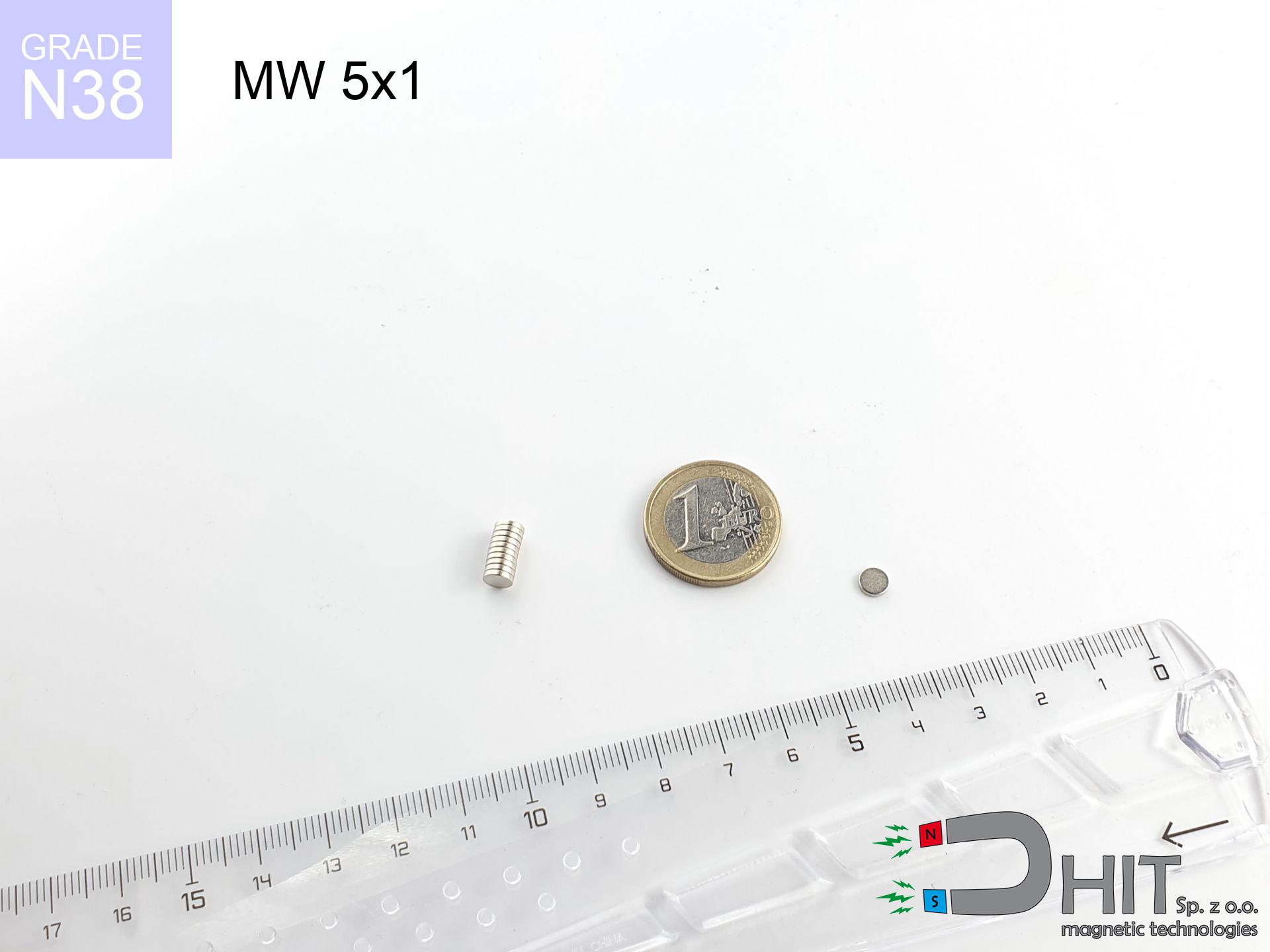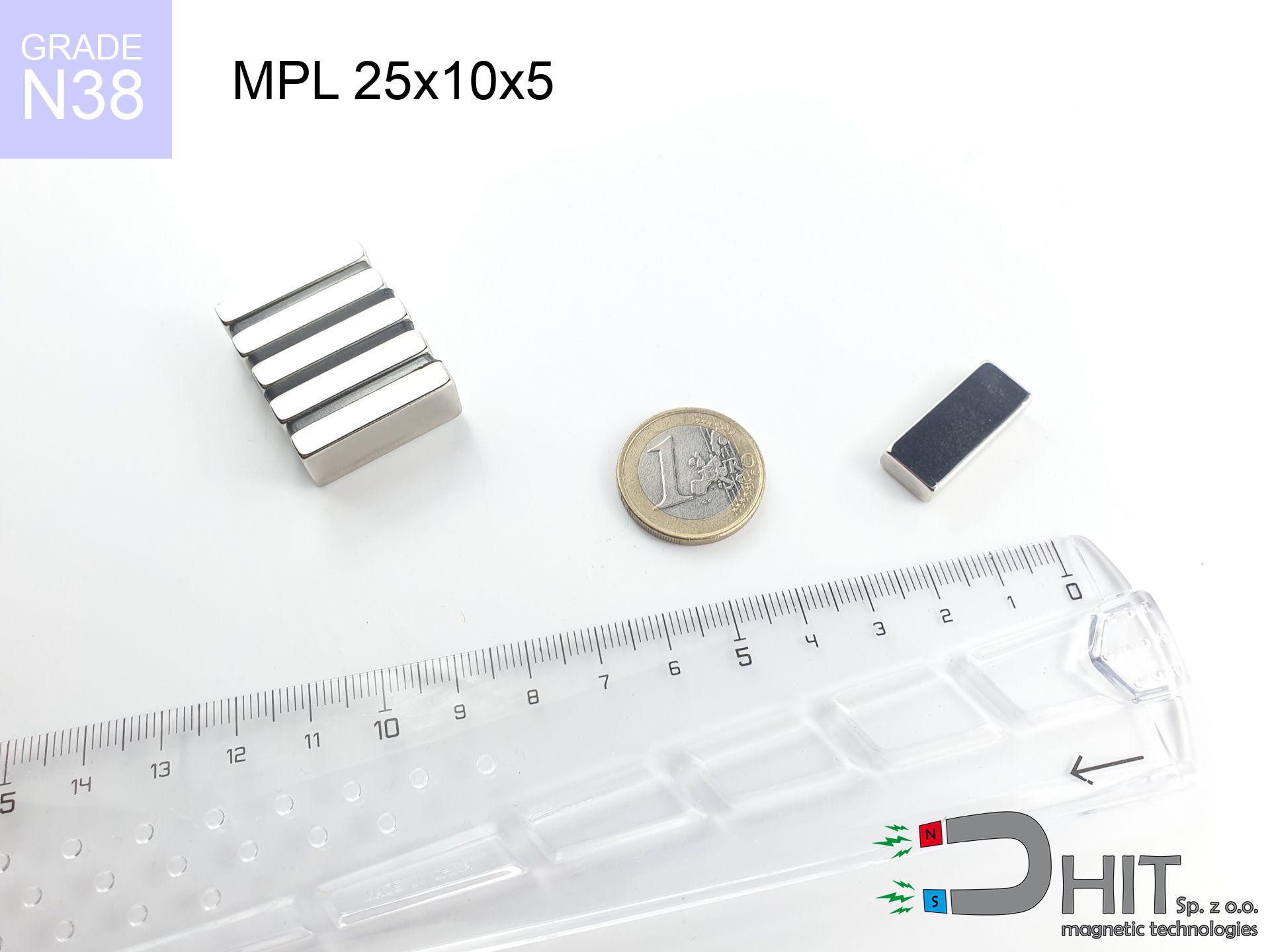SM 18x125 [2xM5] / N42 - magnetic separator
magnetic separator
Catalog no 130270
GTIN/EAN: 5906301812722
Diameter Ø
18 mm [±1 mm]
Height
125 mm [±1 mm]
Weight
0.01 g
Magnetic Flux
~ 5 400 Gauss [±5%]
276.75 ZŁ with VAT / pcs + price for transport
225.00 ZŁ net + 23% VAT / pcs
bulk discounts:
Need more?
Give us a call
+48 888 99 98 98
if you prefer let us know using
our online form
through our site.
Specifications along with appearance of magnetic components can be estimated with our
modular calculator.
Orders submitted before 14:00 will be dispatched today!
Technical parameters of the product - SM 18x125 [2xM5] / N42 - magnetic separator
Specification / characteristics - SM 18x125 [2xM5] / N42 - magnetic separator
| properties | values |
|---|---|
| Cat. no. | 130270 |
| GTIN/EAN | 5906301812722 |
| Production/Distribution | Dhit sp. z o.o. |
| Country of origin | Poland / China / Germany |
| Customs code | 85059029 |
| Diameter Ø | 18 mm [±1 mm] |
| Height | 125 mm [±1 mm] |
| Weight | 0.01 g |
| Material Type | Stainless steel AISI 304 / A2 |
| Magnetic Flux | ~ 5 400 Gauss [±5%] |
| Size/Mount Quantity | 2xM5 |
| Polarity | circumferential - 6 poles |
| Casing Tube Thickness | 1 mm |
| Manufacturing Tolerance | ±1 mm |
Magnetic properties of material N42
| properties | values | units |
|---|---|---|
| remenance Br [min. - max.] ? | 12.9-13.2 | kGs |
| remenance Br [min. - max.] ? | 1290-1320 | mT |
| coercivity bHc ? | 10.8-12.0 | kOe |
| coercivity bHc ? | 860-955 | kA/m |
| actual internal force iHc | ≥ 12 | kOe |
| actual internal force iHc | ≥ 955 | kA/m |
| energy density [min. - max.] ? | 40-42 | BH max MGOe |
| energy density [min. - max.] ? | 318-334 | BH max KJ/m |
| max. temperature ? | ≤ 80 | °C |
Physical properties of sintered neodymium magnets Nd2Fe14B at 20°C
| properties | values | units |
|---|---|---|
| Vickers hardness | ≥550 | Hv |
| Density | ≥7.4 | g/cm3 |
| Curie Temperature TC | 312 - 380 | °C |
| Curie Temperature TF | 593 - 716 | °F |
| Specific resistance | 150 | μΩ⋅cm |
| Bending strength | 250 | MPa |
| Compressive strength | 1000~1100 | MPa |
| Thermal expansion parallel (∥) to orientation (M) | (3-4) x 10-6 | °C-1 |
| Thermal expansion perpendicular (⊥) to orientation (M) | -(1-3) x 10-6 | °C-1 |
| Young's modulus | 1.7 x 104 | kg/mm² |
Elemental analysis
| iron (Fe) | 64% – 68% |
| neodymium (Nd) | 29% – 32% |
| boron (B) | 1.1% – 1.2% |
| dysprosium (Dy) | 0.5% – 2.0% |
| coating (Ni-Cu-Ni) | < 0.05% |
Ecology and recycling (GPSR)
| recyclability (EoL) | 100% |
| recycled raw materials | ~10% (pre-cons) |
| carbon footprint | low / zredukowany |
| waste code (EWC) | 16 02 16 |
View more offers
Advantages as well as disadvantages of Nd2Fe14B magnets.
Pros
- Their power is maintained, and after around ten years it decreases only by ~1% (according to research),
- They are extremely resistant to demagnetization induced by presence of other magnetic fields,
- In other words, due to the glossy layer of silver, the element gains visual value,
- Magnets are distinguished by exceptionally strong magnetic induction on the surface,
- Neodymium magnets are characterized by very high magnetic induction on the magnet surface and are able to act (depending on the form) even at a temperature of 230°C or more...
- In view of the ability of precise shaping and adaptation to unique solutions, neodymium magnets can be modeled in a wide range of geometric configurations, which makes them more universal,
- Key role in modern industrial fields – they are utilized in data components, electromotive mechanisms, advanced medical instruments, also industrial machines.
- Thanks to concentrated force, small magnets offer high operating force, with minimal size,
Weaknesses
- Susceptibility to cracking is one of their disadvantages. Upon intense impact they can break. We advise keeping them in a strong case, which not only secures them against impacts but also raises their durability
- Neodymium magnets lose their force under the influence of heating. As soon as 80°C is exceeded, many of them start losing their force. Therefore, we recommend our special magnets marked [AH], which maintain durability even at temperatures up to 230°C
- Due to the susceptibility of magnets to corrosion in a humid environment, we recommend using waterproof magnets made of rubber, plastic or other material resistant to moisture, when using outdoors
- Due to limitations in creating nuts and complicated forms in magnets, we recommend using casing - magnetic holder.
- Potential hazard resulting from small fragments of magnets can be dangerous, if swallowed, which is particularly important in the context of child safety. Furthermore, tiny parts of these magnets are able to complicate diagnosis medical in case of swallowing.
- Due to complex production process, their price is relatively high,
Lifting parameters
Highest magnetic holding force – what it depends on?
- using a sheet made of mild steel, serving as a magnetic yoke
- possessing a thickness of min. 10 mm to avoid saturation
- characterized by even structure
- under conditions of ideal adhesion (metal-to-metal)
- during pulling in a direction perpendicular to the plane
- at conditions approx. 20°C
What influences lifting capacity in practice
- Distance – the presence of any layer (paint, tape, air) acts as an insulator, which lowers capacity rapidly (even by 50% at 0.5 mm).
- Pull-off angle – note that the magnet has greatest strength perpendicularly. Under sliding down, the holding force drops drastically, often to levels of 20-30% of the maximum value.
- Substrate thickness – for full efficiency, the steel must be sufficiently thick. Paper-thin metal restricts the attraction force (the magnet "punches through" it).
- Steel grade – the best choice is high-permeability steel. Cast iron may attract less.
- Plate texture – smooth surfaces ensure maximum contact, which improves field saturation. Rough surfaces weaken the grip.
- Temperature – temperature increase results in weakening of induction. It is worth remembering the maximum operating temperature for a given model.
Holding force was measured on the plate surface of 20 mm thickness, when the force acted perpendicularly, whereas under parallel forces the holding force is lower. Moreover, even a small distance between the magnet and the plate reduces the lifting capacity.
Warnings
Caution required
Exercise caution. Neodymium magnets act from a distance and snap with huge force, often faster than you can react.
Impact on smartphones
Navigation devices and mobile phones are extremely susceptible to magnetic fields. Direct contact with a strong magnet can decalibrate the sensors in your phone.
Warning for allergy sufferers
Warning for allergy sufferers: The Ni-Cu-Ni coating consists of nickel. If an allergic reaction happens, immediately stop working with magnets and use protective gear.
Electronic hazard
Data protection: Neodymium magnets can damage payment cards and delicate electronics (pacemakers, hearing aids, mechanical watches).
Machining danger
Powder generated during grinding of magnets is combustible. Do not drill into magnets without proper cooling and knowledge.
Eye protection
Neodymium magnets are sintered ceramics, which means they are very brittle. Clashing of two magnets leads to them shattering into shards.
Bone fractures
Large magnets can break fingers instantly. Never put your hand between two attracting surfaces.
Product not for children
NdFeB magnets are not intended for children. Swallowing a few magnets may result in them attracting across intestines, which poses a critical condition and necessitates urgent medical intervention.
Implant safety
People with a heart stimulator have to maintain an large gap from magnets. The magnetism can stop the functioning of the implant.
Heat sensitivity
Watch the temperature. Exposing the magnet to high heat will ruin its magnetic structure and strength.

![Magnetic bar SM 18x125 [2xM5] / N42 Magnetic bar SM 18x125 [2xM5] / N42](https://cdn3.dhit.pl/graphics/banners/magnet.webp)
![SM 18x125 [2xM5] / N42 - magnetic separator](https://cdn3.dhit.pl/graphics/products/sm-18x125-2xm5-cij.jpg)





